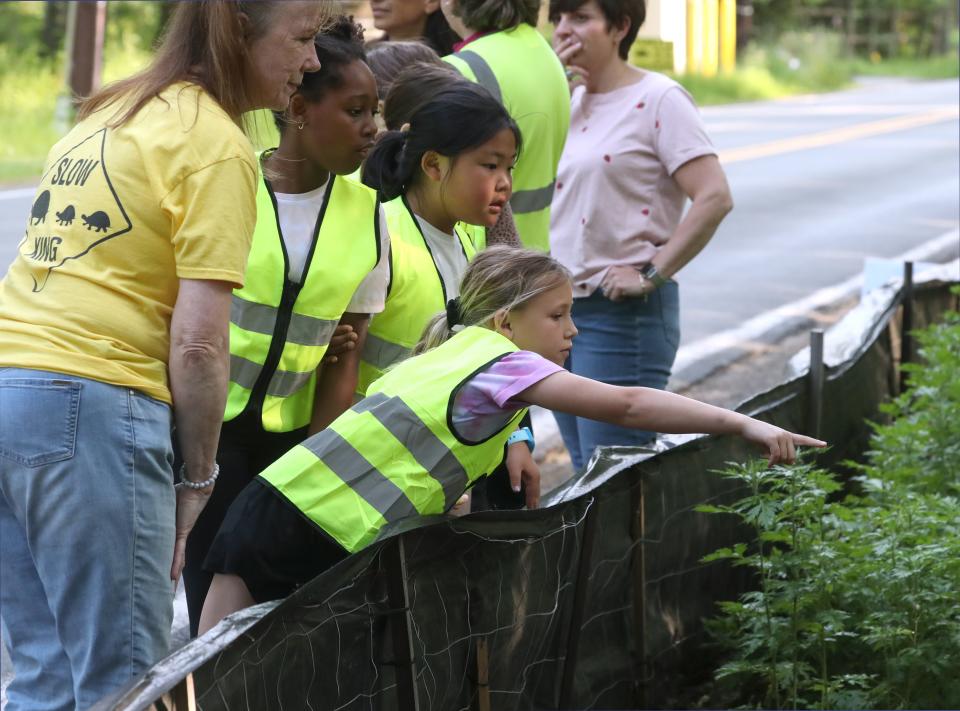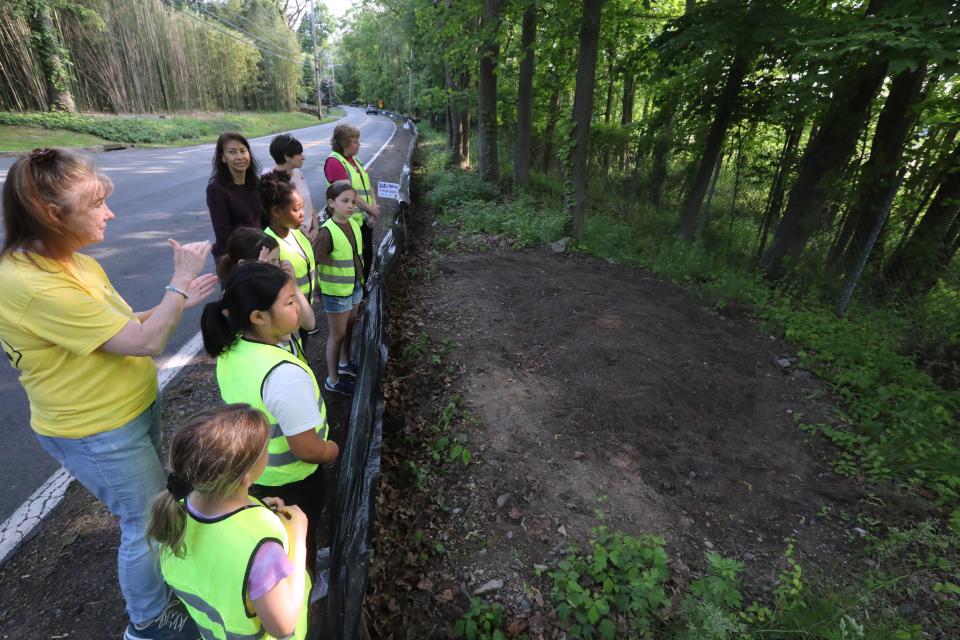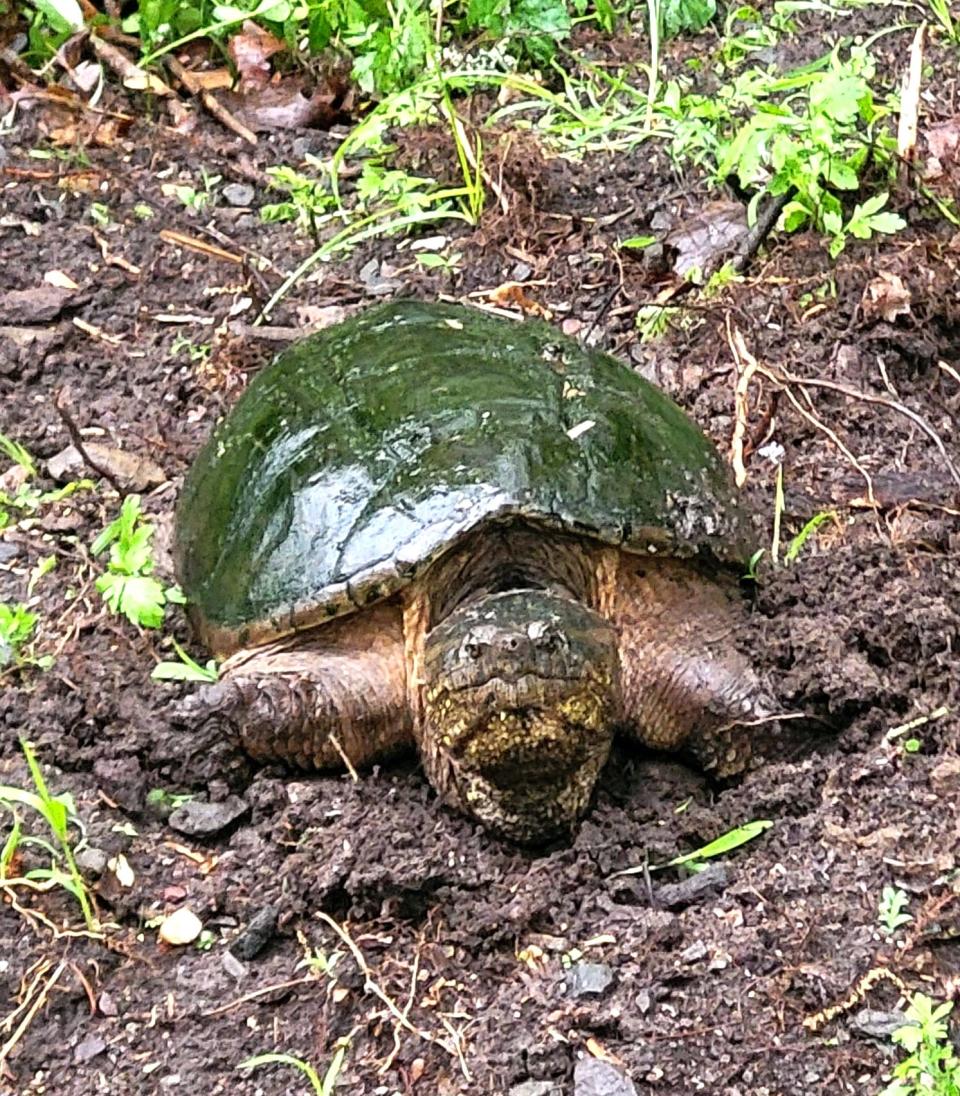A grassroots group is saving turtles along a Rockland highway. How you can help
BLAUVELT - The biggest predator for turtles in our region? The automobile.
That's why a grassroots group, The Turtles of Western Highway, has worked for 14 years at trying to rebalance the odds for turtles who live and lay their eggs along the banks of the Hackensack River.
The turtle group doesn't interfere with natural predation, said co-founding volunteer Carolyn Hill, but works to protect the turtles from human-created peril along a one-third mile stretch. Up to 200 volunteers help with the effort each year, but more are needed.
The perks? Preserving a fragile ecosystem. And witnessing nature's ways.

"Sometimes we see the mom turtles laying their eggs," Hill told fourth-graders from Girl Scout Troop 40091 Tappan Zee Service Unit, who stopped by recently for a tour. "That's way cool."
What's the risk?
Common snapping turtles ‒ the official state reptile of New York ‒ and other species emerge from the river each year in early June to lay eggs. Then 60-90 days later, the hatched turtles scoot their way back to the water.
Here's the problem: Turtles want nice, dry places to nest. Their preferred spots in this West Nyack-to-Blauvelt stretch are across Western Highway, a windy two-lane road that drivers zip down.
Mama turtles can grow up to 20 inches long and more than 20 pounds, difficult but not impossible for a driver to see. But they are, after all, slow.
The babies, which hatch about 60-90 days later, navigate their way back to the water. They are the size of a quarter.
New York: Pace U students target 'wildlife killing contests,' push for ban
That harbor seal in the Hudson River? It appears healthy. (And, yes, it is adorable)
Newsletter: Subscribe to the Rockland Angle and get county news delivered to your inbox every Monday
"They will mosey around and nature tells them instinctively where to find water," Hill said. About 30-40 eggs hatch from each nest. It's the natural cycle that only a few make it back to the water. But crossing the road makes that slim margin even worse.
About 14 years ago, neighbors along Western Highway and other volunteers started putting up signs to warn drivers to slow down. Volunteers wearing safety vests walk along Western Highway, watching for turtles so they could help them get out of the road. They also motion to cars to slow down, which can solicit plenty of honking and irate hand motions from drivers.
But it wasn't enough.
What's the fix?
Several years ago, the turtle group started placing temporary barriers along the west side of Western Highway and creating nesting mounds behind it.
They got help in creating a turtle-friendly environment from veterinarian Dr. Zach Whitman, now located in Poughkeepsie. He's also the founder of Conservation Herpetoculture.
Neighboring O'Sullivan Tree Care and other landscapers donate supplies for the nesting berms and fencing.
They are now working on a more permanent border to encourage turtles to stay off the road.

Recently, The Turtles of Western Highway affiliated with the Hudson Valley Humane Society, a registered nonprofit. That helps them obtain donations.
Veolia, the water company that supplies most of Rockland and parts of Bergen and owns the land around the waterway, has worked with the turtle group for the past six years. This year, Veolia is giving $5,000 for turtle-protective efforts, including replacing the barriers along the road and coming up with more permanent structures to encourage the turtles to nest on the riverside of the road.
"Our long-term vision is to create beautiful Turtle Habitat for generations to come," said Bill Madden of Veolia.
With the temporary fencing, and even when there's a more permanent barrier, Hill said turtles will still do what they have done for decades. Some climb over or find ways under the black landscaper tarp and seek out nesting spots in neighboring yards.
"Their instincts are to go back to where they were," said Hill, noting that turtles' lifespan is decades long.
"It's amazing how agile they can be," said Annette Burke, a volunteer and neighbor.
When turtles find their way to the road, Hill said, volunteers keep an eye out and will scoot them across if needed. They also keep track of the nests, so they can be ready to help the babies cross safely.
The group works to protect every turtle they can.
Hill has a couple turtles in her home that she's rehabbing. That includes one she's dubbed "Shelly" who suffered a broken femur and cracked pelvic bone two seasons ago. Shelly is almost ready for release, Hill said, and should be able to lay more eggs in years to come.
How to help protect turtles
The Turtles of Western Highway seeks volunteers to help patrol the road and check on turtle nests.
Go to their Facebook page, "The Turtles of Western Highway," to find out more.
A "crossing guard" signup sheet can be found at http://bit.ly/WesternHwyTurtlesNeedYou.
Turtle tips
If you want to move a turtle to safety, you can pick them up, but it's important for their safety and yours to do it properly.
Some tips:

Hands at 4 and 8: Place your hands a bit below the midpoint on their shells. Grasp firmly but not tightly. Their shells are kind of like a nail, Hill said, and they can feel pain and pressure, just like you can when you touch the top of your fingernail.
They bite. Their beaks are sharp and strong. Their necks can extend and twist pretty far. Hold them far away.
They pee. Another reason to hold them with your arms outstretched: they will urinate when in defense mode.
Don't pull their tails: It's part of their vertebrae and you could break their back.
Nancy Cutler writes about People & Policy. Follow her on Twitter at @nancyrockland.
This article originally appeared on Rockland/Westchester Journal News: Turtles nesting near NY highway in danger so volunteers step in

